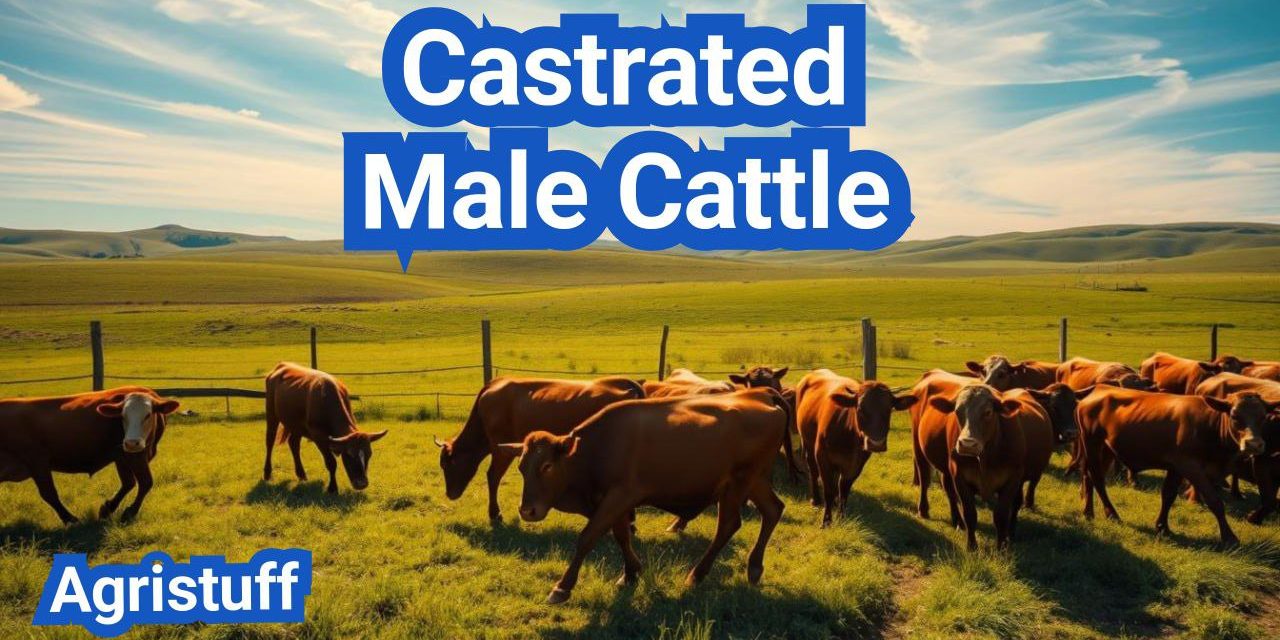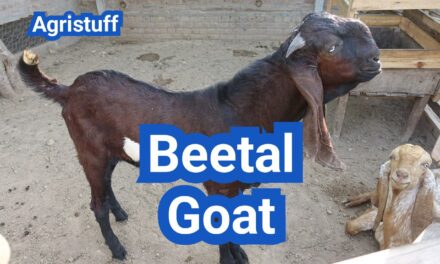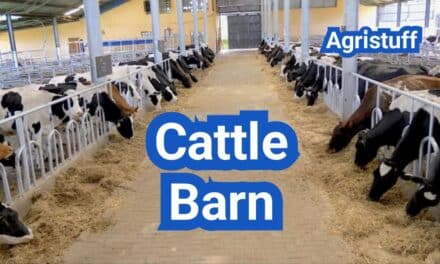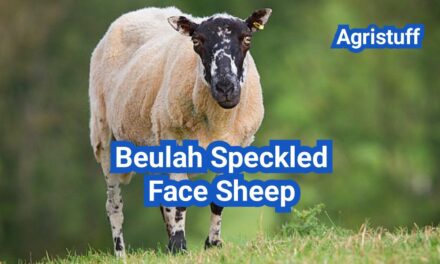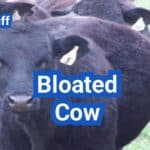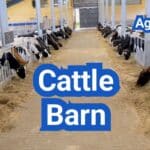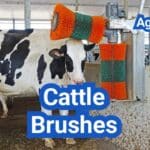The practice of castrating male cattle has been a cornerstone of livestock farming for centuries. By removing the reproductive capabilities of bull calves, farmers can improve meat quality, increase docility, and simplify herd management.
Castration is a routine management procedure that has numerous benefits, including enhanced beef cattle management and improved productivity. The resulting steer cattle are highly valued for their meat, which is tender and flavorful.
The use of castrated male cattle in sustainable beef farming practices is becoming increasingly important as the industry shifts towards more humane and environmentally friendly methods.
Key Takeaways
- Castration improves meat quality and tenderness.
- Steer cattle are more docile and easier to manage.
- Castration is a crucial aspect of beef cattle management.
- Sustainable beef farming practices are becoming increasingly important.
- Castrated male cattle play a significant role in livestock farming.
Understanding Castrated Male Cattle Terminology
Understanding the various terms associated with castrated male cattle is crucial for effective communication among farmers, ranchers, and livestock professionals. The terminology used to describe the sex and age of cattle includes bull calf, bull, steer, and ox, each reflecting different stages or conditions of male cattle.
Defining Steers, Bulls, and Other Terms
A bull refers to an intact male cattle, while a steer is a male cattle that has been castrated. Castration is typically performed to make male cattle more docile and easier to manage, especially in feedlots or on the range. The term ox usually refers to a castrated male cattle used for draft purposes.
The distinction between these terms is not merely semantic; it has practical implications for livestock management. For instance, steers are generally preferred for beef production due to their more docile nature and the quality of their meat.
“Castration is a common practice in cattle management, aimed at reducing aggression and improving the overall quality of the animal for various agricultural purposes.”
The Historical Context of Cattle Castration
Castration of cattle has been practiced for centuries, with its origins rooted in the need to manage draught animals effectively. Historically, castration was used to simplify the handling of male cattle by reducing their aggression and making them more suitable for work as draft animals.
| Term | Description |
|---|---|
| Bull Calf | A young male cattle, typically before reaching sexual maturity. |
| Bull | An intact male cattle. |
| Steer | A male cattle that has been castrated, often raised for beef. |
| Ox | A castrated male cattle, often used for draft purposes. |
The practice of castrating male cattle has evolved over time, influenced by advances in agricultural practices and changing market demands. Today, castration remains a vital aspect of cattle management, contributing to the production of high-quality beef and the overall efficiency of livestock operations.
Why Farmers Castrate Male Cattle

The decision to castrate male cattle is influenced by various factors, including behavior, economics, and herd management. Castration, or the removal of the testicles, is a common practice in livestock management that offers several benefits to farmers and the livestock industry as a whole.
Behavioral Management Benefits | Castrated Male Cattle
Castrating male cattle, also known as steers, significantly reduces aggression among males. Intact males, or bulls, are known for their aggressive behavior, especially as they mature. This aggression can lead to injuries among handlers and other animals within the herd. By castrating male cattle, farmers can simplify the handling process and reduce the risk of injury, making the overall management of the herd safer and more efficient.
“Castration is a critical step in managing the behavior of male cattle,” notes a leading agricultural expert. “By reducing aggression, farmers can improve the overall safety and productivity of their livestock operations.”
Economic Advantages | Castrated Male Cattle
Castration also offers several economic benefits to farmers. One of the primary advantages is the improvement in meat quality. Steers, being castrated males, tend to have more marbling in their meat, which can enhance tenderness and flavor. This, in turn, can command a higher price in the market. Additionally, castration reduces the risk of unwanted breeding, which can help farmers maintain a more controlled and predictable breeding program.
- Improved meat quality due to increased marbling
- Reduced risk of unwanted breeding
- Simplified handling and management of male cattle
Herd Management Considerations | Castrated Male Cattle
From a herd management perspective, castration helps in maintaining a more harmonious and manageable herd. With reduced aggression among males, the overall stress within the herd decreases, leading to a healthier environment for all animals. Furthermore, castration allows farmers to manage their herds more effectively, focusing on the quality and health of the animals rather than dealing with the challenges posed by intact males.
Effective herd management through castration can lead to improved livestock productivity and cattle handling safety. By understanding the benefits and implementing castration as part of their livestock management strategy, farmers can enhance the overall efficiency and profitability of their operations.
The Optimal Age for Castrating Male Cattle
Determining the optimal age for castrating male cattle is crucial for their welfare and the efficiency of beef production. Castration is a common practice in cattle management that involves removing the testicles of male animals to reduce aggression and improve meat quality.
The decision on when to castrate is significant, as it affects the animal’s growth, development, and overall well-being. Research suggests that castrating calves at a young age, preferably before they reach sexual maturity, is generally considered less stressful and more beneficial for their welfare.
Castration Before Sexual Maturity | Castrated Male Cattle
Castrating male cattle before they reach sexual maturity is a widely accepted practice. This approach is considered to reduce stress and minimize potential complications associated with the procedure. Calves castrated at a young age tend to have better growth rates and are easier to manage within the herd.
Early castration also helps in reducing undesirable male characteristics, such as aggression, which can make handling the animals safer for farmers. Moreover, it can lead to improved meat quality, as the absence of testosterone can result in more tender beef.
Castration After Maturity: Challenges and Considerations
Castrating male cattle after they have reached maturity is more challenging and can have negative impacts on their growth and development. Older animals may experience more stress and require more intensive care post-procedure.
The challenges associated with late castration include increased risk of complications, such as infection, and a potentially longer recovery period. Additionally, castration after maturity may not offer the same benefits in terms of meat quality and handling safety as early castration.
Age-Related Impact on Growth and Development
The age at which male cattle are castrated can significantly impact their growth patterns and development. Early castration tends to result in more efficient growth rates, as it reduces the energy expenditure associated with testosterone production and aggressive behavior.
Furthermore, castration age can influence the distribution of fat and the overall quality of the meat. Steers (castrated males) generally produce more marbled beef, which is often preferred in the market for its tenderness and flavor.
Bull vs. Steer: Understanding the Differences

Bulls and steers exhibit distinct characteristics that impact their handling, behavior, and production value. Understanding these differences is crucial for effective livestock management and optimizing beef production.
Physical Differences | Castrated Male Cattle
The physical differences between bulls and steers are primarily influenced by the presence or absence of testosterone. Bulls, being intact males, have higher levels of testosterone, which affects their muscle development and overall physique.
Key Physical Characteristics:
- Bulls: More muscular, heavier bone structure, and a more pronounced masculine appearance.
- Steers: Less muscular, finer bone structure, and a more docile appearance.
Behavioral Differences | Castrated Male Cattle
The behavioral differences between bulls and steers are significant, particularly in terms of aggression and handling ease. Bulls are generally more aggressive due to their higher testosterone levels, making them more challenging to handle.
Behavioral Comparison:
| Characteristic | Bulls | Steers |
|---|---|---|
| Aggression Level | Higher | Lower |
| Handling Ease | More challenging | Easier |
| Docility | Less docile | More docile |
Production Value Comparison | Castrated Male Cattle
The production value of bulls and steers differs, particularly in the context of beef production. Steers are generally preferred for beef due to their improved meat quality and docility.
Production Value Aspects:
- Meat Quality: Steers typically produce more tender and flavorful meat.
- Feed Efficiency: Steers are often more efficient in converting feed into weight gain.
- Handling and Management: Steers are easier to manage due to their docile nature.
By understanding the differences between bulls and steers, farmers and livestock managers can make informed decisions about their cattle management practices, ultimately enhancing the efficiency and profitability of their operations.
Benefits of Castrated Male Cattle in Livestock Management
Livestock managers often opt for castrating male cattle to improve handling safety and simplify herd dynamics. Castration, by reducing testosterone levels, makes male cattle more docile and easier to handle, thereby reducing the risk of injury to handlers.
Improved Handling Safety | Castrated Male Cattle
One of the primary benefits of castrating male cattle is improved handling safety. Intact males can be aggressive and difficult to manage due to their natural instinct to establish dominance. By castrating them, farmers can significantly reduce aggression, making it safer for handlers to manage the herd.
- Reduced aggression among males
- Easier handling and management
- Lower risk of injury to handlers
Reduced Aggression in Herds | Castrated Male Cattle
Castration also plays a crucial role in reducing aggression within the herd. With lower testosterone levels, castrated males are less likely to engage in fights, creating a more harmonious herd environment. This reduction in aggression not only improves the welfare of the animals but also simplifies the task of managing the herd.
Key advantages include:
- Less stress among animals
- Improved overall herd health
- Easier management of herd dynamics
Simplified Herd Management | Castrated Male Cattle
Castrated male cattle are generally easier to manage due to their more docile nature. This simplifies various aspects of herd management, from feeding and breeding to overall care and handling. Simplified herd management translates to increased efficiency and reduced operational costs for farmers.
By adopting castration practices, livestock managers can enhance livestock productivity and contribute to more sustainable beef farming practices. The benefits of castration are multifaceted, impacting not just the handling and management of cattle but also the overall sustainability of beef production systems.
Common Methods of Cattle Castration
Castration of cattle is performed using different methods, each with its unique advantages and disadvantages. The choice of method depends on factors such as the age and size of the animal, as well as welfare considerations.
Surgical Castration Technique
Surgical castration is one of the most common methods used for cattle. It involves making an incision in the scrotum to remove the testes. This method requires proper hygiene and pain management to minimize stress and prevent infection.
The advantages of surgical castration include:
- Effective for cattle of various ages
- Allows for the removal of any abnormalities or infections
- Can be performed with basic surgical equipment
However, it also carries risks such as infection and bleeding if not performed correctly.
Elastrator Banding Method | Castrated Male Cattle
The elastrator banding method involves applying a rubber ring around the scrotum to restrict blood flow to the testes, leading to their atrophy. This method is commonly used for young calves.
The benefits of elastrator banding include:
- Less invasive compared to surgical castration
- Reduces the risk of bleeding
- Can be performed with minimal equipment
However, it may cause discomfort to the animal if not done correctly, and there’s a risk of infection if the band is not applied properly.
Burdizzo Clamp Procedure | Castrated Male Cattle
The burdizzo clamp procedure is a bloodless castration method that involves crushing the spermatic cord using a specialized tool. This method is considered to be less invasive than surgical castration.
The advantages of the burdizzo clamp procedure include:
- Minimizes the risk of infection
- Reduces bleeding risks
- Can be performed quickly
However, it requires specialized equipment and training to perform effectively.
In conclusion, the choice of castration method depends on various factors including the age of the cattle, available equipment, and the expertise of the person performing the procedure. Understanding the advantages and disadvantages of each method is crucial for effective cattle management.
The Best Way to Castrate a Calf: Step-by-Step Guide
Castrating a calf is a critical procedure in livestock management that requires careful planning and execution. This process is essential for improving the handling and productivity of male cattle, making them more suitable for various agricultural purposes.
Preparation and Safety Measures | Castrated Male Cattle
Before castrating a calf, it’s crucial to prepare the necessary equipment and ensure the environment is clean and safe. This includes having a clean and sterile instrument for the procedure, as well as appropriate restraint equipment to minimize stress and prevent injury to both the animal and the handler.
Key preparation steps include:
- Selecting the appropriate castration method based on the age and size of the calf.
- Ensuring all equipment is clean and in good working condition.
- Having a veterinarian or experienced handler present if possible.
Restraint Techniques
Restraining the calf is a critical step to ensure the procedure is performed safely and effectively. Various restraint methods can be used, including a squeeze chute or manual restraint, depending on the size and temperament of the calf.
Effective restraint techniques involve:
- Using a calm and gentle approach to minimize stress.
- Ensuring the calf is securely restrained to prevent movement during the procedure.
- Having assistance available to help with holding the calf.
Performing the Procedure
The actual castration procedure involves removing the testicles to render the male calf infertile and reduce aggression. The method used can vary, with common techniques including surgical castration, elastrator banding, and the Burdizzo clamp method.
| Castration Method | Description | Age Suitability |
|---|---|---|
| Surgical Castration | Involves surgically removing the testicles. | Can be used at various ages. |
| Elastrator Banding | Uses a rubber band to cut off blood flow to the testicles. | Best for young calves. |
| Burdizzo Clamp | Crushes the spermatic cords without cutting the skin. | Suitable for calves of various ages. |
Post-Castration Care
After castrating a calf, proper post-procedure care is essential to promote healing and minimize the risk of complications. This includes monitoring for signs of infection, ensuring the calf has access to clean water and food, and providing appropriate pain management as needed.
“Proper post-castration care is crucial for the welfare of the animal and the success of the procedure. Monitoring for complications and providing appropriate care can significantly impact the recovery and overall health of the calf.”
By following these steps and guidelines, farmers and livestock handlers can ensure that the castration process is carried out humanely and effectively, contributing to the overall productivity and welfare of their cattle.
Pain Management and Welfare Considerations
The welfare of cattle during castration is significantly improved with appropriate pain management strategies. Castration, while a common practice in livestock management, can be a source of stress and pain for the animals. Effective pain management is crucial not only for ethical reasons but also to ensure the overall health and productivity of the cattle.
Anesthesia Options
Various anesthesia options are available to minimize pain during castration. Local anesthesia, such as lidocaine, is commonly used to numb the area, reducing the pain experienced by the animal. The use of anesthesia is considered a best practice, as it significantly improves the welfare of the cattle by reducing pain and stress associated with the procedure.
Pain Relief Protocols
In addition to anesthesia, pain relief protocols play a vital role in managing post-castration pain. Non-steroidal anti-inflammatory drugs (NSAIDs) are often used to alleviate pain and reduce inflammation. Implementing a comprehensive pain relief protocol can enhance the recovery process and overall welfare of the cattle.
Minimizing Stress During and After Castration
Minimizing stress is a critical aspect of castration. This can be achieved through careful handling practices, providing a calm environment, and ensuring that the procedure is carried out efficiently. Reducing stress not only improves animal welfare but can also positively impact the productivity and health of the cattle.
By focusing on pain management and welfare considerations, farmers and livestock managers can ensure that castration is performed in a way that prioritizes animal welfare, ultimately contributing to more sustainable and humane livestock production practices.
Impact of Castration on Meat Quality

Steer beef is renowned for its superior quality, a result of the castration process that enhances tenderness and flavor. Castration significantly influences the quality of beef by reducing testosterone levels, which can lead to more tender and flavorful meat.
Tenderness and Fat Distribution
Castration improves meat tenderness by reducing the amount of testosterone, which can make the meat tougher. Additionally, castration affects fat distribution, leading to a more marbled meat product that is often preferred by consumers.
Marbling, or the intramuscular fat, is a critical factor in determining the quality and palatability of beef. Steers typically exhibit a more desirable marbling pattern compared to intact males.
Flavor Profile Differences
The flavor profile of beef from steers is often described as milder compared to beef from intact males. This difference is attributed to the lower levels of testosterone in steers, which can result in a more acceptable flavor for many consumers.
“The reduction in testosterone due to castration results in a more tender and palatable product, which is a significant factor in the preference for steer beef in many markets.”
Market Preferences for Steer Beef
Steer beef is generally preferred in the market due to its consistent quality and improved tenderness. The beef industry often favors steer beef for its marbling characteristics and the resulting eating quality.
- Improved tenderness
- Better fat distribution
- Milder flavor profile
These factors contribute to the market’s preference for steer beef, making it a staple in many beef production systems.
Primary Uses of Castrated Male Cattle in Agriculture

The agricultural industry relies on castrated male cattle for several important applications, primarily in beef production, as draft animals, and for show and exhibition purposes.
Beef Production
Beef production is the most significant use of castrated male cattle. Steers are preferred for their growth rate, meat quality, and temperament, making them ideal for feedlot operations. The practice of castrating male cattle improves the quality of the meat by reducing the likelihood of undesirable characteristics associated with intact males.
Key benefits of using steers for beef production include:
- Improved meat tenderness and flavor
- Better feed efficiency
- Easier handling due to reduced aggression
Draft Animals and Work Oxen
Castrated male cattle are also used as draft animals and work oxen. Their strength and docility make them suitable for tasks such as plowing fields and other agricultural labor. This traditional use is still valued in some farming communities.
| Task | Advantages of Using Steers |
|---|---|
| Plowing Fields | Steers provide the necessary strength and endurance for plowing, making them invaluable for certain farming practices. |
| Other Agricultural Labor | Their docility and strength make steers suitable for various agricultural tasks, contributing to the efficiency of farm operations. |
Show and Exhibition Animals
Steers are also used in show and exhibition contexts, where their breed characteristics and quality are showcased. This use highlights the importance of castrated male cattle in promoting genetic excellence within cattle breeds.
The advantages of showing steers include:
- Promotion of breed characteristics
- Opportunities for breeders to showcase their livestock
- Education on cattle breeding and husbandry practices
Growth Performance and Management of Steers

Understanding the growth performance of steers is essential for optimizing beef cattle management practices. Steers, being castrated male cattle, have different growth patterns compared to bulls, which significantly impacts their weight gain and feed efficiency.
Castration affects the hormonal balance in male cattle, leading to changes in their growth characteristics. This alteration results in steers generally having a more docile nature and different growth rates compared to intact males.
Weight Gain Patterns
The weight gain patterns of steers are influenced by several factors, including breed, nutrition, and management practices. Generally, steers exhibit a more consistent growth rate compared to bulls, making their growth patterns more predictable.
Table: Comparative Growth Rates of Steers vs. Bulls
| Age (Months) | Steer Average Weight (kg) | Bull Average Weight (kg) |
|---|---|---|
| 6 | 200 | 220 |
| 12 | 400 | 450 |
| 18 | 550 | 600 |
Feed Efficiency Optimization
Optimizing feed efficiency is crucial for the economic viability of steer production. Steers are known to have different feed conversion ratios compared to bulls, often requiring more efficient feeding strategies.
Feed efficiency can be enhanced through nutritional management, including the use of high-quality feed and appropriate feeding techniques. Precision feeding strategies can significantly improve the overall productivity of steer operations.
Health Management Specific to Steers
Effective health management is vital for maintaining the welfare and productivity of steers. This includes regular health checks, vaccinations, and parasite control measures.
Steers are prone to certain health issues due to their castrated status, such as increased risk of certain metabolic disorders. Proper health management strategies can mitigate these risks and ensure optimal growth performance.
Alternative Approaches to Traditional Castration

Beyond traditional surgical castration, emerging techniques offer promising alternatives for managing male cattle. As the livestock industry continues to evolve, these innovative approaches are gaining attention for their potential to improve animal welfare and productivity.
One of the most significant developments in alternative castration methods is immunocastration technology. This involves vaccinating cattle against gonadotropin-releasing hormone (GnRH) to reduce testosterone levels, thereby achieving the benefits of castration without the need for surgery.
Immunocastration Technology
Immunocastration has been shown to be effective in reducing aggression and improving meat quality. By targeting GnRH, the vaccine decreases the production of sex hormones, leading to behavioral changes similar to those achieved through surgical castration. This method is considered to have potential welfare benefits, as it eliminates the need for surgical intervention.
According to a study published in the Journal of Animal Science, “Immunocastration is a viable alternative to surgical castration, offering benefits in terms of animal welfare and meat quality.”
This approach not only reduces the stress associated with surgical castration but also provides a more controlled and humane method of managing male cattle.
Half-Castration Methods
Another alternative approach is half-castration, where only one testicle is removed. This method is less commonly practiced but has been explored for its potential to retain some of the benefits of intact males while reducing aggression.
- Half-castration may offer a compromise between the growth benefits of intact males and the behavioral management advantages of castration.
- Research into half-castration is ongoing, with studies examining its effects on growth rate, meat quality, and animal behavior.
Emerging Technologies in Cattle Management
The cattle industry is witnessing a surge in emerging technologies aimed at improving management practices. From advanced genetic selection tools to innovative health monitoring systems, these technologies are transforming the way cattle are managed.
Some of the emerging technologies include:
- Precision livestock farming techniques that utilize sensors and data analytics to monitor and manage cattle health and behavior.
- Genetic technologies that enable the selection of desirable traits, potentially reducing the need for castration.
- Advanced pain management protocols that improve the welfare of animals undergoing castration.
As these technologies continue to develop, they are likely to play a significant role in shaping the future of cattle management, offering more humane, efficient, and sustainable practices.
Sustainable Beef Farming with Castrated Male Cattle

Sustainable beef farming with castrated male cattle offers a promising approach to reducing environmental footprint. Castrated male cattle, or steers, are known for their improved feed efficiency and reduced aggression, making them an integral part of sustainable beef production systems.
Environmental Impact Considerations
The environmental impact of beef farming is a significant concern, with factors such as greenhouse gas emissions, water usage, and land degradation being major issues. Castrated male cattle can contribute to more sustainable practices by improving feed efficiency, which in turn can reduce the overall environmental footprint of beef production.
Reduced aggression in steers also means less stress on the animals, potentially leading to better health outcomes and reduced need for veterinary interventions, further contributing to sustainability.
Resource Efficiency
Castrated male cattle are known for their improved feed efficiency, which is crucial for sustainable beef farming. By converting feed into weight gain more effectively, steers require less feed to reach market weight, reducing the demand on resources such as feed crops and water.
- Optimized feed conversion ratios
- Reduced waste production
- Lower overall resource consumption
Long-term Sustainability Benefits
The long-term sustainability benefits of using castrated male cattle in beef farming are multifaceted. By improving feed efficiency and reducing aggression, steers can contribute to more sustainable and humane beef production systems.
Moreover, sustainable beef farming practices that incorporate castrated male cattle can lead to improved land management, biodiversity conservation, and enhanced ecosystem services, ensuring the long-term viability of beef production.
| Aspect | Benefits of Castrated Male Cattle |
|---|---|
| Environmental Impact | Reduced greenhouse gas emissions per unit of beef produced |
| Resource Efficiency | Improved feed conversion ratios, reduced resource consumption |
| Long-term Sustainability | Enhanced ecosystem services, improved land management |
The Future of Steers in Modern Agriculture
Castrated male cattle, or steers, have been a cornerstone of livestock farming for centuries, offering numerous benefits in terms of meat quality, handling safety, and herd management. As the livestock industry continues to evolve, the role of steers is likely to be influenced by factors such as consumer preferences, animal welfare considerations, and the need for sustainable practices.
The future of steer cattle in modern agriculture will be shaped by ongoing debates around sustainable beef farming and livestock productivity. Effective beef cattle management practices will be crucial in balancing the needs of farmers, consumers, and the environment. By understanding the benefits and uses of castrated male cattle, farmers and ranchers can make informed decisions about their management practices, ultimately contributing to a more sustainable food system.
As the demand for high-quality beef continues to grow, the importance of steer cattle in modern agriculture is likely to endure. By adopting best practices in steer cattle management, the livestock industry can promote animal welfare, reduce environmental impact, and improve overall livestock productivity.
FAQ
What is the primary reason for castrating male cattle?
The primary reason for castrating male cattle is to improve their behavior, making them easier to handle and manage, while also improving meat quality and reducing the risk of injury to handlers.
What are the different methods of cattle castration?
The common methods of cattle castration include surgical castration, elastrator banding, and burdizzo clamp procedure, each with its own advantages and disadvantages.
What is the optimal age for castrating male cattle?
Castrating calves before sexual maturity is generally considered to be less stressful and more beneficial for their welfare, although the optimal age may vary depending on factors such as breed and management practices.
How does castration affect the meat quality of male cattle?
Castration improves meat quality by reducing testosterone levels, resulting in more tender and flavorful meat, with steer beef being known for its consistent quality and preferred in the market.
What are the benefits of using castrated male cattle in livestock management?
Castrated male cattle offer several benefits, including improved handling safety, reduced aggression among males, and simplified herd management, making them a preferred choice for beef production.
What are the primary uses of castrated male cattle in agriculture?
Castrated male cattle are primarily used for beef production, but they are also used as draft animals and work oxen, leveraging their strength for tasks such as plowing fields, and in show and exhibition contexts.
How does castration impact the growth performance of steers?
Castration influences the weight gain patterns and feed efficiency of steers, with optimizing feed efficiency and implementing proper health management strategies being crucial for maximizing their productivity.
What are the alternative approaches to traditional castration methods?
Alternative approaches to traditional castration include immunocastration technology, which involves vaccinating cattle against GnRH, and half-castration methods, which are being researched for their potential benefits and welfare implications.
How do castrated male cattle contribute to sustainable beef farming?
Castrated male cattle contribute to sustainable beef farming by reducing aggression, improving feed efficiency, and simplifying herd management, resulting in more sustainable beef production systems.
What is immunocastration, and how does it work?
Immunocastration involves vaccinating cattle against GnRH, reducing testosterone levels and providing a potential alternative to surgical castration, with benefits including improved welfare and reduced pain.
Conclusion of: Castrated Male Cattle (Steers) | Benefits and Uses
Castrated male cattle, also known as steers, are essential to modern beef production systems, especially in the United States. These animals are known for their calm temperament, efficient feed conversion, and high-quality beef yield. Understanding how steers are managed, their benefits, and their role in sustainable farming is crucial for livestock producers aiming for profitability and ethical standards.
What Are Castrated Male Cattle?
Castrated male cattle are bulls that have undergone surgical or non-surgical castration to remove their testicles. This procedure is typically performed at a young age to prevent aggressive behavior and facilitate easier management. Castration reduces testosterone levels, leading to calmer behavior and better meat quality.
Source: Iowa State University Extension
Why Are Male Cattle Castrated?
The primary reasons for castrating male cattle include:
- Improved meat quality: Less testosterone results in finer muscle fibers and marbling.
- Safer handling: Castrated cattle are less aggressive and easier to manage.
- Reduced injury risk: Lower aggression means fewer injuries among herd members.
Source: Oklahoma State University Extension
Beef Quality and Marbling in Steers
One of the top reasons farmers prefer castrated male cattle is the superior beef quality. Steers generally develop more intramuscular fat, also known as marbling, which improves the taste, tenderness, and juiciness of the meat.
Behavioral Advantages of Castrated Male Cattle
Compared to intact bulls, castrated male cattle are calmer and more social. They are easier to handle, less likely to damage equipment or injure handlers, and better suited for group housing or pasture grazing.
Source: Merck Veterinary Manual
Common Castration Methods
There are several methods used for castrating cattle, including:
- Surgical castration with scalpel.
- Banding using elastic bands.
- Burdizzo clamp for bloodless castration.
Each method has its pros and cons and should be chosen based on animal welfare, age, and farm setup.
Source: North Dakota State University Extension
Ideal Age for Castration
Veterinarians typically recommend castrating male cattle within the first few months of life. Early castration leads to faster recovery, less stress, and better outcomes in terms of behavior and meat quality.
Source: American Veterinary Medical Association
Health and Welfare Considerations
Animal welfare is a major concern in livestock farming. Castrating male cattle should be done under hygienic conditions, using pain relief methods where applicable, and always according to veterinary guidelines to reduce suffering and risk of infection.
Source: Animal Welfare Approved
Economic Benefits of Raising Steers
From a financial perspective, castrated male cattle offer:
- Higher meat prices due to better marbling.
- Lower management costs thanks to easier handling.
- Reduced facility damage and vet bills from fighting.
Source: University of Florida IFAS Extension
Environmental and Ethical Factors
Steers are better suited to rotational grazing systems and integrated livestock practices. Their calm behavior allows for lower-stress environments, which contributes to more sustainable and ethical livestock operations.
Source: Sustainable Agriculture Research and Education (SARE)
Final Thought
Castrated male cattle, or steers, are essential to efficient and ethical beef production. From improved meat quality to safer handling and better economic returns, managing steers properly offers immense benefits. Farmers should apply best practices and consult veterinarians to ensure humane and effective castration.

